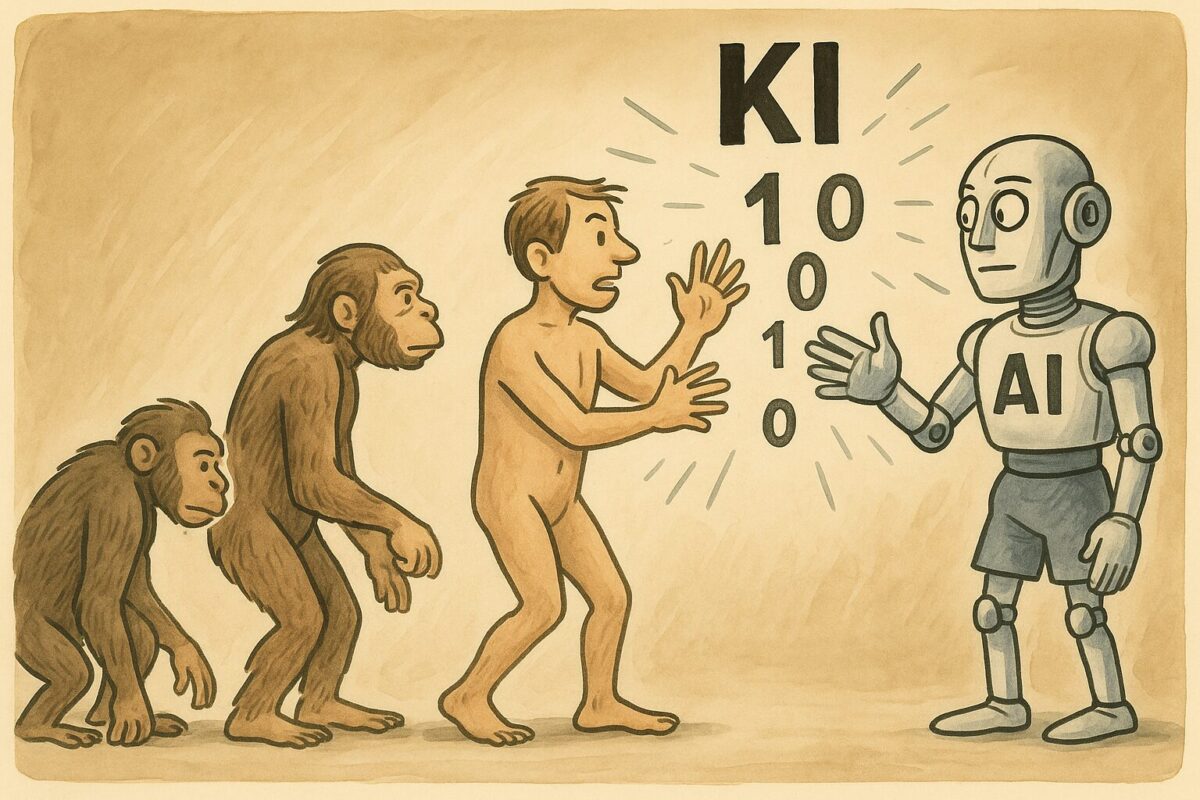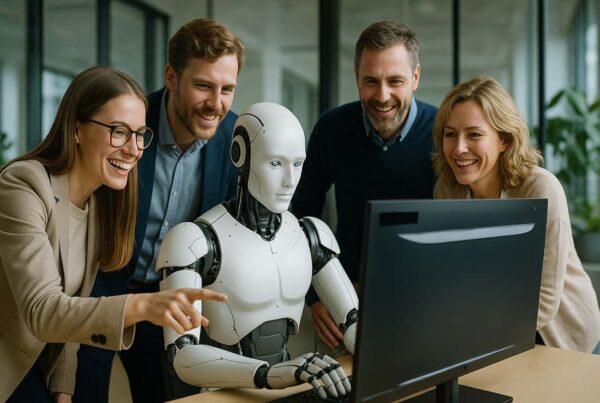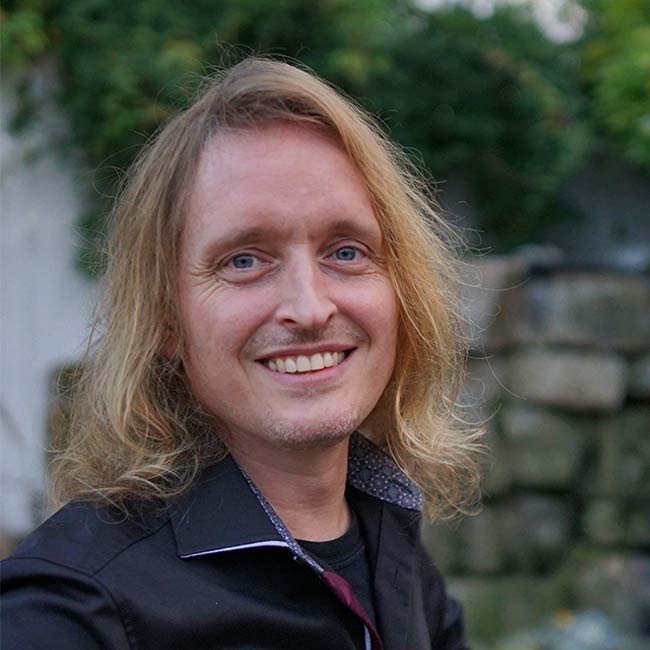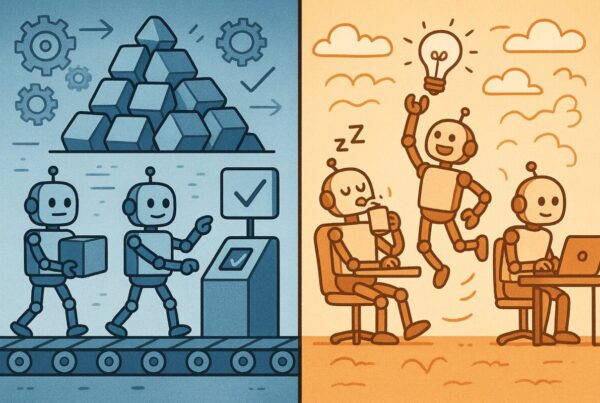KI stellt die nächste Stufe der Evolution des Menschen dar…
„Dieser Schimpanse benutzt einen Stock um das Innenleben eines Insekts auszudrücken!“ berichtete Jane Goodall in den 1960s Jahren. Dieses Ereignis belegte den Irrglaube, das nur der Mensch in der Lage sei, kreativ Werkzeuge nutzen zu können.
Inzwischen wissen wir, dass der Unterschied zwischen Menschen und Tieren nicht das Nutzen der Werkzeuge ist, sondern die Entwicklung dieser.
Betrachtet man die Innovationen der letzten Jahrhunderte, so lassen sich diese in zwei Kategorien einteilen:
- nach ihrem Neuigkeitsgrad (inkrementell oder radikal)
- und nach ihrem Innovationsgegenstand (Produkt, Prozess, Service)
Ein Innovationsgegenstand ist letztlich ein Werkzeug, dass über die Zeit immer wieder neu entwickelt wird, mit dem Zweck unserer Kreativität freien Lauf zu gewähren. Der zu erfüllende Zweck bleibt der Gleiche, das Werkzeug an sich wandelt sich.
Ein sehr passendes Beispiel hierfür ist das Ziel der Informationsübermittlung. Anfangs stand lediglich das Mittel der Sprache zur Verfügung. Durch die stetige Entwicklung der Menschheit entstand das Papier, anschließend der Druck da das ständige Schreiben Ressourcen benötigte. Durch die Entdeckung der Übertragung von Sprache über elektrische Signale wurde das Radio geboren. Dem folgte der Fernseher und dann das Internet.
Jetzt befinden wir uns in einem weiteren Wandel. Künstliche Intelligenzen ermöglichen Informationen schneller zu ermitteln, erfassen und stellen diese uns sofort überall zur Verfügung.
KI ist die nächste Stufe in der Evolution der Menschheit.
Bis vor kurzem hat der Mensch von „oben herab“ bestimmt, wie ein Programm zu Funktionieren hat. Aber diese „Programme“ können lernen, Gegenstände mathematisch genau analysieren und ihre Daten mit anderen vergleichen. Machine Learning (ML) hat den Prozess um 180° gewendet.
Statt einem Programm vorzuschreiben was es zu tun hat, müssen wir nur noch ein Start Signal senden. Selbstständiges Lernen hat dazu geführt, dass die Programme sich selbst ständig optimieren und anpassen.
Machine Learning Prozesse haben Realitätsfilter entwickelt, Editing Tools für die Breite Masse, Motion Capture für Aufnahmen und all das im personalisierten Stil jedes Einzelnen (Jede Kamera der neuesten Smartphones haben diese Features).
Was bringt die Zukunft mit KI?
Wo wir morgen sein werden ist reine Spekulation, jedoch ein nettes Gedankenspiel.
Betrachten wir gestern, so sehen wir dass Unternehmen Jobstellen streichen oder umbenennen. Während gestern Microsoft Kenntnisse gefordert waren, sind es heute ChatGPT Kenntnisse und morgen vielleicht Programmierkenntnisse.
Ein Arbeitsplatz in den 90er hatte einen Rechner mit einem Bildschirm, heute haben wir einen Laptop und einen Bildschirm, morgen vielleicht nur noch den Bildschirm wenn alles in der Cloud liegt und wir mit der KI-Assistenz sprechen.
Volvo etablierte die Sicherheitsgurte in den Autos, Tesla ermöglichte flächendeckend den Einsatz von Elektroautos und vielleicht wird heute die Weiche gelegt für das Autonome Fahren für morgen.
Künstliche Intelligenz ist ein Teil der menschlichen Evolution. Ohne KI wird der Mensch sich garantiert weiter entwickeln, aber nicht in diesem Tempo.
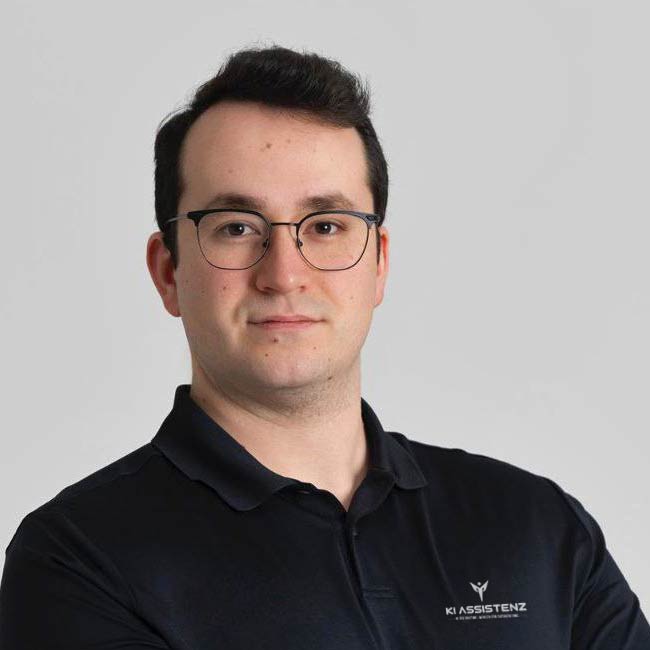
Jean Du Lude ist B2B-Berater in personalintensiven Branchen. Zur Reduktion von Kosten und Chaos hat er sich die Implementierung funktionierender KI-Lösungen für langfristige Entlastung des Personals zum Spezialgebiet gemacht. Von KI-Agents über KI-Frameworks sind seine Lösungen stets auf langfristige Anwendbarkeit ausgerichtet.


